Over 1,000 people in Syracuse join millions nationwide in the March for Our Lives
1,000+ in Syracuse join the nationwide marches
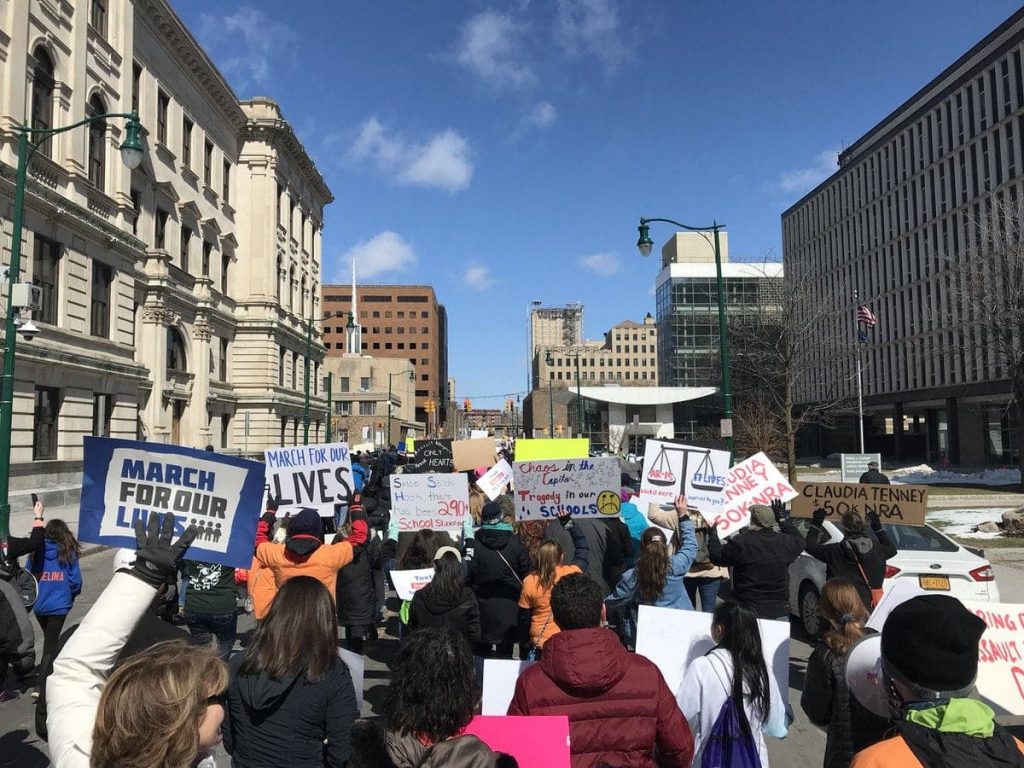
Rebecca Dutsar asks a question into the microphone. A sea of people stand before her. The James M. Hanley Federal Building looms behind. She repeats the question: “How much is a child worth?”
Officials locked down Dutsar’s school in Connecticut shortly after 9:30 a.m. on Dec. 14, 2012. That’s when 20-year-old Adam Lanza, armed with his mother’s rifle, walked into nearby Sandy Hook Elementary School in Newtown and began shooting at students and staff.
Dutsar’s younger sister, 5 at the time, was at Sandy Hook. She waited hours before learning her sister was not among the 26 students and staff killed that day.
“How much is a child worth?” she asks again.
“Everything,” the crowd exclaims in unison.
Dustar was one of 12 speakers at the March for Our Lives in Syracuse on Saturday. The protest drew 1,200 people who started outside the Everson Museum of Art on Harrison Street and marched about a mile to the Federal Building on Clinton Square.
The event was in support of the larger March for Our Lives, which took place on Saturday in the nation’s capital. Syracuse is just one of 845 cities that hosted sister marches around the world, spanning from Hong Kong to San Francisco, according to the March for Our Lives website.
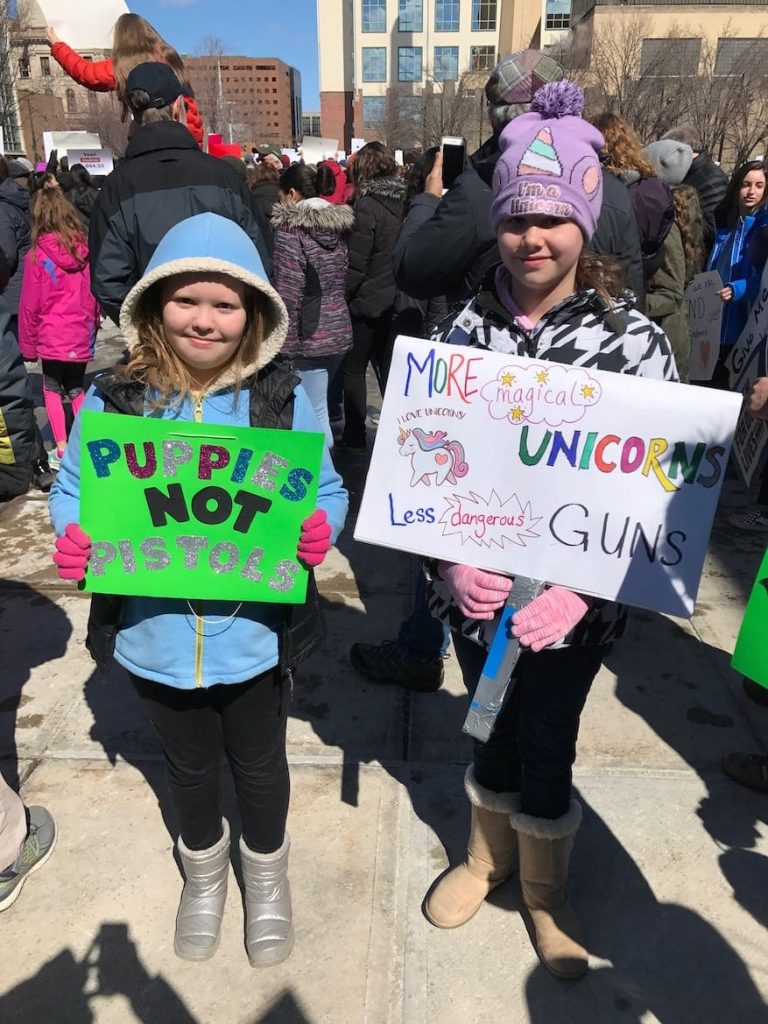
Paige Hogle, 10, and Claire Walters, 11, support the March for Our Lives outside the Everson Museum of Art.
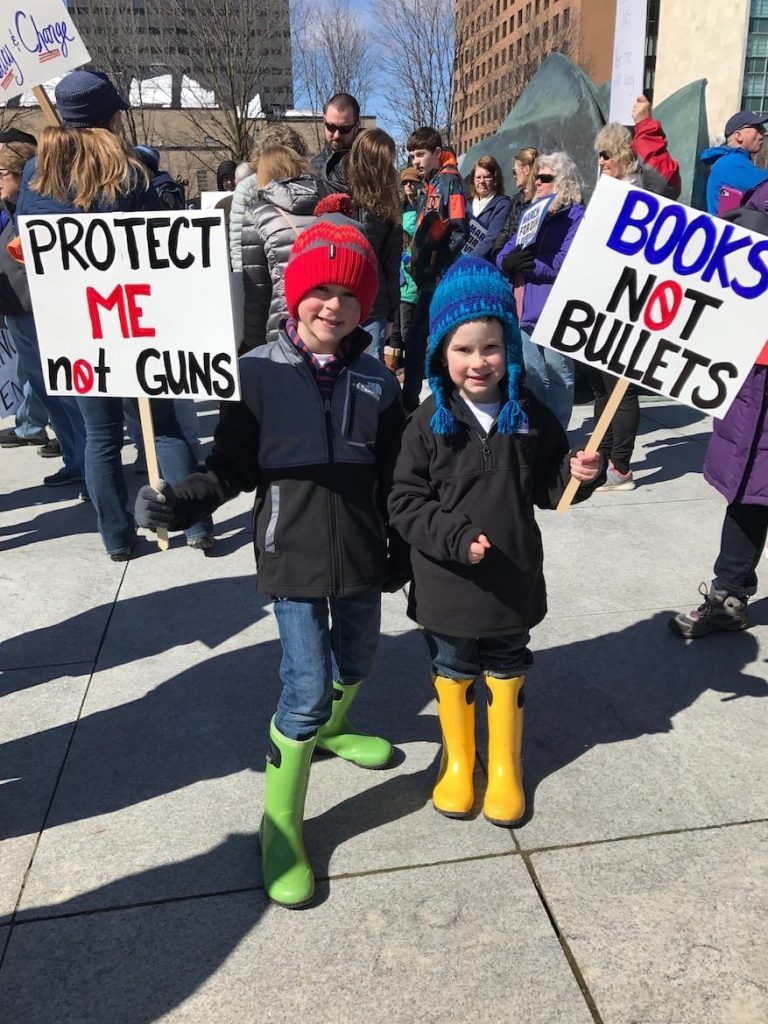
Jude Hazard, 6, and Noah Hazard, 5, await the start of the March for Our Lives.
High school students from multiple Syracuse area high schools, such as Jamesville-Dewitt, Christian Brothers Academy and Nottingham, began organizing the event just after the shooting at Marjory Stoneman Douglas High School in Parkland, Florida. The march sought to bring awareness to gun-related violence, and to call for more gun-control measures nationwide.
So far in 2018, there have been 3,178 deaths related to gun violence and 49 mass shootings in the United States, according to the Gun Violence Archive, a nonprofit group that tracks gun violence. Since Sandy Hook in December of 2012, there have been 1,625 mass shootings in the U.S., the group found.
The Syracuse march officially started at noon when protesters filled the streets chanting as they marched to the Federal Building. They chanted throughout the one-mile, 20-minute march. “This is what democracy looks like” and “not one more” were two popular chants.
Will Guisbond, 15, one of the organizers of the event and a sophomore at Jamesville-Dewitt High School, said today was only a start.
“To anyone who maybe wasn’t at the march or people who were but maybe felt a little overwhelmed, regardless of how their experience was today, I think they should know they can make a difference and what they do matters,” Guisbond said. “Even if they weren’t an organizer, there is always going to be something else. This is only the beginning. There is so much more that people want to do and getting involved, especially voting, and helping out in campaigns.”
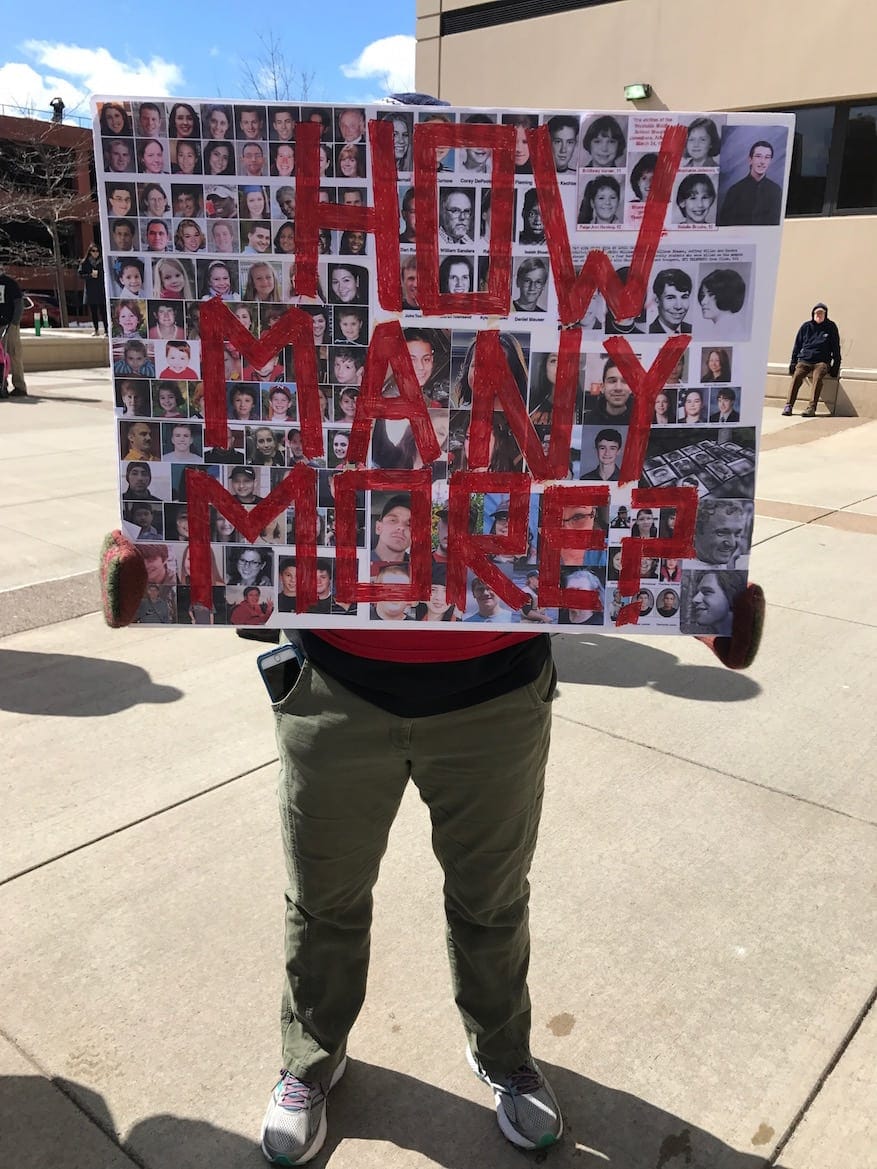
Whether directly affected by gun violence or not, everyone had their own reasons for being at the march.
“I was too young to protest the Vietnam War or the civil rights marches, so this is my first,” attendee Ted Lenkiewicz said. “I regret the fact that I was too young to take a stance before. This one touches your heart. I am hoping for the day that our representatives would be embarrassed by having an A rating from the NRA. When that day happens, we have succeeded. We have made change.”
Sarah McCoubrey, a Syracuse University professor in the college of Visual and Performing Arts, said gun manufacturers need to take responsibility for their products.
“It is the manufacturers who try to figure out a way to get people to keep buying guns,” McCoubrey said. “Now they promote fear. It is a national embarrassment. Do we really think we need to protect ourselves from our government? Like we need to keep our gun ownership secret? It is a level of fear.”
Marcher Diana Bruhdage said regulation of guns just makes sense.
“They do not want the government to know how many guns they have,” she said of gun owners. “They do not want the government to know what they are keeping because that means the government is in their lives. Meanwhile they have smartphones that track everything they do, which makes no sense. We need a license to drive a car but we do not need a license to have a gun.”
Holly Scherzi questions the need of military grade weapons in the first place.
“The next day you are going to park a tank in your driveway,” Scherzi said. “How can you live in peace in a country where you never know if somebody is going to carry a gun? We do not have the right to be safe, the right to have our health looked after, we do not even have the right to eat, to eat enough, or to have a roof over our heads. It is really sad.”
Max Werde, 11, points out that marching just might get the attention of policy makers.
“I feel it is important because a lot of people, especially higher up in the government, aren’t doing anything about it so if they see other people care in positions of lower power, maybe they will think about it and consider,” Werde said.
Bill Werde, the director of the Bandier Program at Syracuse University and Max’s father, remembers his son being the same age as the Sandy Hook victims.
“It just hit me so incredibly hard what those parents must be going through,” Bill Werde said. “You know, now both as a parent and as a person responsible for 100 Bandier students, it’s honestly something I live with every day. I think about it all the time. What would happen if? What would happen if? I just think a day like today is a little thing that people who have that fear, who have that concern, who want sane laws, it is just a little thing we can do to show how many of us feel this way.”
For Syracuse University freshman Brooke Weiss, the march hits home because one of her friends was part of a school shooting a few years ago.
“It still haunts her to this day,” Weiss said of her friend. “It is just not okay. There is nothing that can ever cover that cost of just having that weight on your shoulders for the rest of your life.”
Ashley Price, a Syracuse University freshman, wants regulation, but does not advocate that guns be taken away.
“I think that is why it is so controversial because people think we are saying no guns at all,” Price said. “We are just saying guns need to be regulated, there needs to be more laws in place to prevent the tragedies they are being used to cause.”
Ashley Laird, a Syracuse University freshman, explains she marches because she wants to stop worrying about the same situation playing out while she is on her own campus.
“I want to walk into a place without having to worry about can somebody come in right now,” Laird said. “Should I survey the room and see where would I go if someone comes in with a gun? That is literally what I do all the time and it is not healthy. I want to be able to walk into a room and not worry about what to do if a gunman were to come in.”
Cy Lurie, 11, said she does not believe the constitution meant to allow for the possession of assault rifles by average citizens.
“I don’t feel the need that people should be walking around with automatic assault rifles for hunting,” said Lurie, a Cazenovia fifth grader. “I think only the armed services should have them. When the constitution was written, there were only muskets, so if people wanted to have muskets, they could have muskets, but when the constitution was written and that is all they had. They did not have these automatic assault rifles.”
Maia Chakin, 14, said there is a reason that politicians are not passing needed gun-control legislation.
“Kids are getting killed in schools and people in the government are so corrupt that they are not doing anything about it because it is not office buildings getting shot up,” Chakin said. “It is schools. We are the ones being effected.”
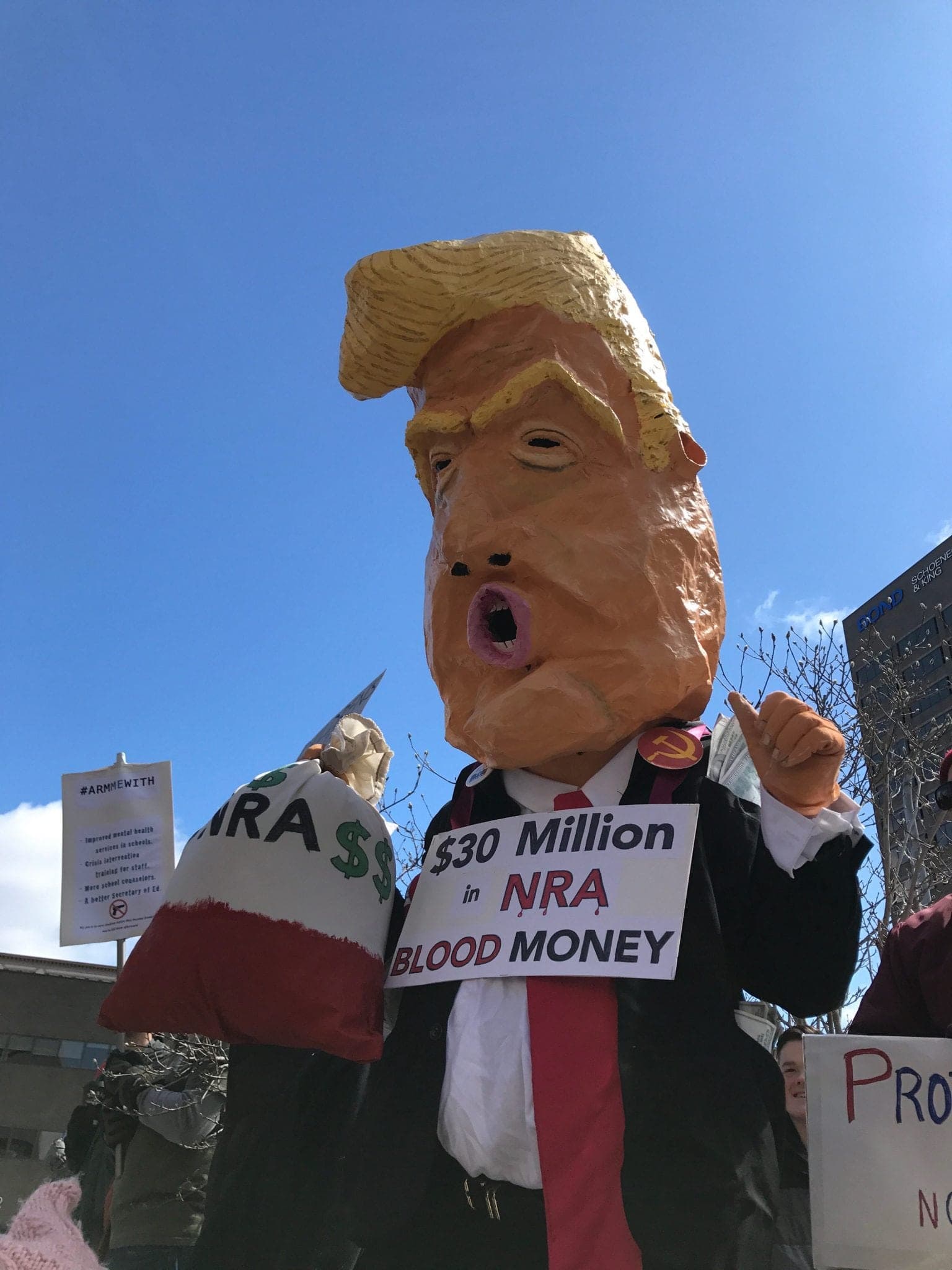
Scott Deming, a self-proclaimed “avid hunter,” said he too supports the march.
“I have been hunting since I was 12 years old,” Deming said. “I am 60. I own shot guns. I hunt for sport, but I don’t understand the need for ARs, AKs, the big automatic, semiautomatic. I know they are not automatic but they can make them automatic. I do not understand it. I do not agree with it. I support these kids. It is a great movement.”
Liv Dei Dolori, a Syracuse University junior who is from Newtown, Connecticut, said the students from Sandy Hook were too young to create the change the students from Parkland have ignited.
“The kids were so young in the school that they were not old enough to do it,” she said. “I feel like now that it has become such a movement, I feel like it is really going to spark.”
Jake Smith contributed to this report.





